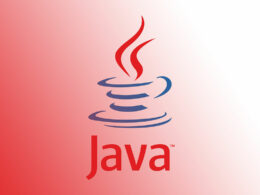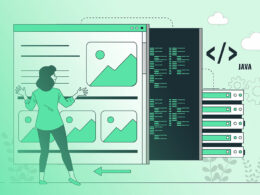User Interfaces Made Easy: Top Java GUI Frameworks

Imagine crafting the heartbeat of your Java application—the user interface—a task often perceived as daunting, yet pivotal in the journey of software creation. In this vast ecosystem, Java GUI frameworks serve as the architect’s blueprint, the artist’s palette.
In the intricate dance of pixels and actions, these frameworks are the silent force powering smooth interactions and responsive designs for desktop applications. They are not merely tools; they embody the lifeblood of a program’s interaction with the world.
Today, we’ll dive into the rich tapestry of Java GUI frameworks, exploring their capabilities and the variances in their aesthetic and functional offerings.
From the foundational Swing and AWT to the enchanting JavaFX and the pragmatic Eclipse SWT, we navigate through the jungle of choices.
By the article’s end, you’ll have a comprehensive roadmap—a beacon to guide you through the maze of Java GUI frameworks, ensuring an informed choice for your next vibrant creation.
We will elucidate best practices, performance considerations, and peek into how these frameworks gel with event-driven programming, styling, and multi-threading to elevate user experiences to new heights.
Java GUI Frameworks
| Java GUI Framework | Type | Primary Use | Development Approach | Notable Features |
|---|---|---|---|---|
| JavaFX | GUI Toolkit | Desktop and Rich Internet Applications | Declared UI via FXML (similar to XML) or programmatic Java code | Modern, rich features for UI, 3D support, CSS for styling |
| Jakarta Faces (formerly JavaServer Faces) | Web Framework | Web Applications | Component-based, uses Facelets for templating | Integrates with Enterprise Java, Rich ecosystem of components |
| Vaadin | Web Application Framework | Web Applications | Java on the server, rendered to browser as HTML+JavaScript | Combines server-side architecture with client-side to create a rich UI experience |
| Blade | MVC Web Framework | Web Applications | Follows MVC pattern, programmatic in pure Java | Lightweight, modular, RESTful framework, supports plugins |
| Swing | GUI Toolkit | Desktop Applications | Programmatic UI design in pure Java code | Traditional, part of Java SE until Java 11, Pluggable Look-and-Feel |
| Spring | General Application Framework | Full-stack development, especially for enterprise and web applications | Inversion of Control (IoC), follows spring-core principles | Vast ecosystem (Spring MVC for web), Comprehensive IoC container |
| Google Web Toolkit (GWT) | Java-to-JavaScript Compiler and Framework | Web Applications | Write in Java, compiles to optimized JS, widgets for UI | Supports AJAX applications without needing to write JS |
| AWT | GUI Toolkit | Desktop Applications | Programmatic UI design, superseded by Swing and JavaFX | Predecessor to Swing, less feature-rich, system-native components |
| Play | MVC Web Framework | Web Applications | High-productivity, programmatic and convention over configuration | Hot code reloading, Asynchronous I/O, built on Akka for concurrency |
| Grails | Application Framework | Web Applications | Follows “coding by convention”, Groovy-based (supports Java) | Scaffolding, plug-in system, rapid development |
| SWT | GUI Toolkit | Desktop Applications | Library for UI, low level, emphasis on native look and feel | Part of the Eclipse IDE platform, tight integration with OS |
| Hibernate | ORM Framework | Database Communication | Data-mapping framework for Java, mapping objects to database tables | Reduces boilerplate of data query and retrieval |
| LibGDX | Game Development Framework | Game and graphic-intensive Applications | Write once, run anywhere philosophy, programmatic | Robust feature-set for game development, includes physics and animation |
JavaFX
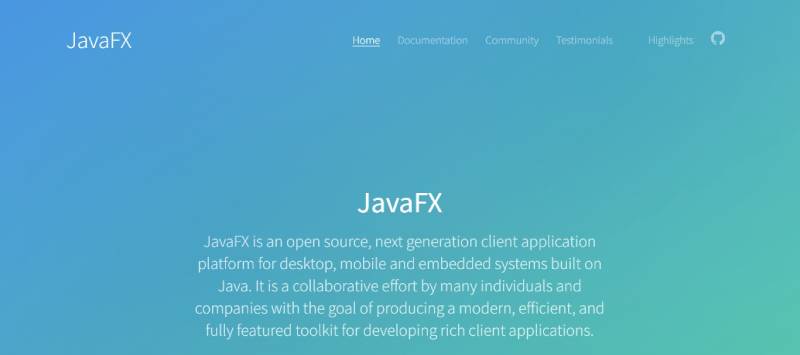
Stepping into the universe of JavaFX feels like engaging with a canvas that stretches to the horizon, eagerly awaiting the splash of creativity. This modern, rich client platform is a breath of fresh air, delivering exquisite user experiences with its multimedia-rich capabilities.
Best Features:
- Stunning graphics with hardware acceleration
- FXML for declarative UIs
- Comprehensive documentation and vibrant community
What we like about it: The standout here—the fluid choreography of user interfaces with cinematic ease. It’s the design flexibility that breathes life into every pixel onscreen.
Jakarta Faces
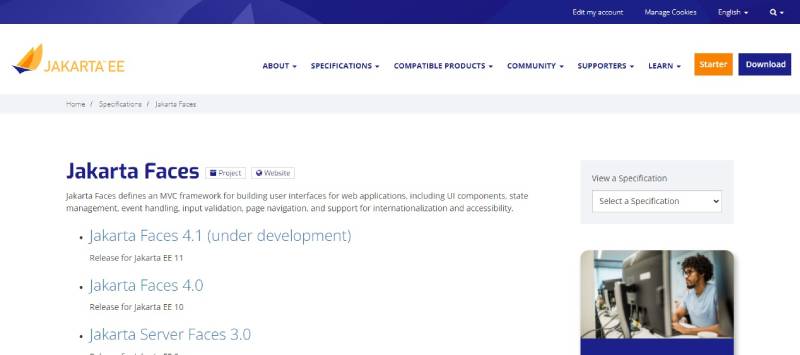
Jakarta Faces, previously JavaServer Faces, is akin to a seasoned maestro orchestrating web user interfaces with precision. Designed for enterprise-level projects, it shines in integrating web-based UIs into server-side Java EE applications.
Best Features:
- Robust server-side component framework
- Extensive templating with Facelets
- Built-in AJAX support
What we like about it: Its strength lies in robustness—building consistent, reliable, and scalable enterprise-grade web applications is where Jakarta Faces excels.
Vaadin
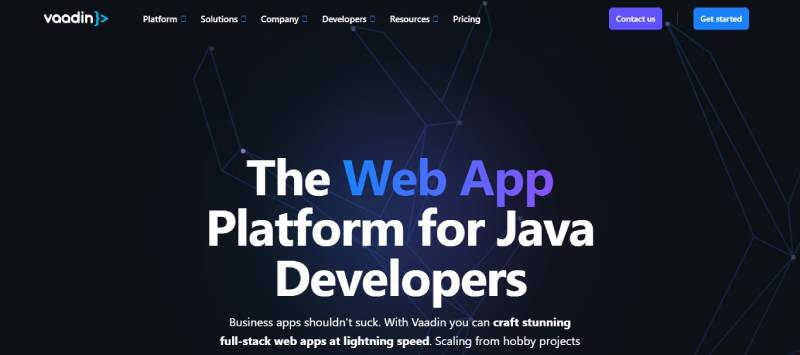
Immersing in Vaadin is embarking on a journey where simplicity and powerful abstraction merge. It’s a tool that whimsically juggles server-driven approaches to create web interfaces as if they were desktop applications, with minimal fuss over technicalities.
Best Features:
- Simplified server-side development
- Fluid, responsive web applications
- Rich set of UI components
What we like about it: The gem within—transmuting the server-side code into client-rich applications pulsating with life, no gymnastics needed.
Swing

Swing wields the hammer of the olden gods—a time-tested workhorse for desktop GUIs in the Java ecosystem. Its mature libraries and what-you-see-is-what-you-get (WYSIWYG) editor harness years of development wisdom.
Best Features:
- Extensive selection of UI components
- Cross-platform Look and Feel
- Integrative with older Java applications
What we like about it: The familiarity—it’s a bastion of comfort, with miles and miles of tested terrain under its belt.
Spring

Spring might invoke visions of growth, and rightfully so. This juggernaut in the Java world cultivates web applications with a flourish of enterprise features, extending well beyond the UI to the roots of complex back-end services.
Best Features:
- Comprehensive ecosystem for various needs
- Inversion of Control container
- Robust data access framework
What we like about it: Versatility is the bedrock, supporting a spectrum of enterprise applications, in full bloom with features.
Google Web Toolkit (GWT)
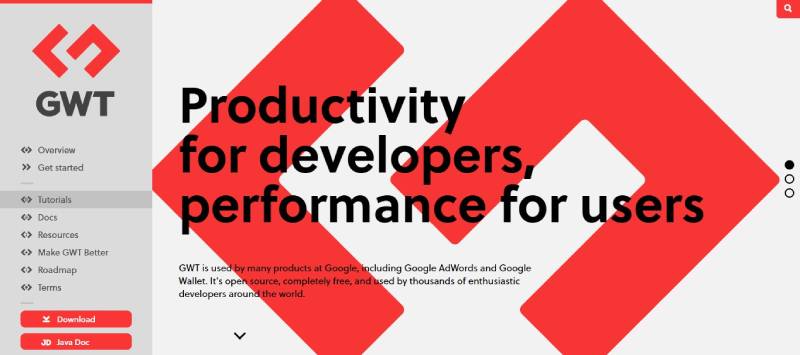
Google Web Toolkit casts a spell, turning Java code into potent JavaScript, weaving web applications that feel as snug and responsive as native apps. It’s magic for those who cherish Java’s charm yet yearn for web applications’ broad reach.
Best Features:
- Java to JavaScript cross-compilation
- Reusable web UI framework components
- Strong Google backing
What we like about it: Seamlessness—enabling developers to stay in the Java realm while the final product thrives in a web environment.
AWT (Abstract Window Toolkit)
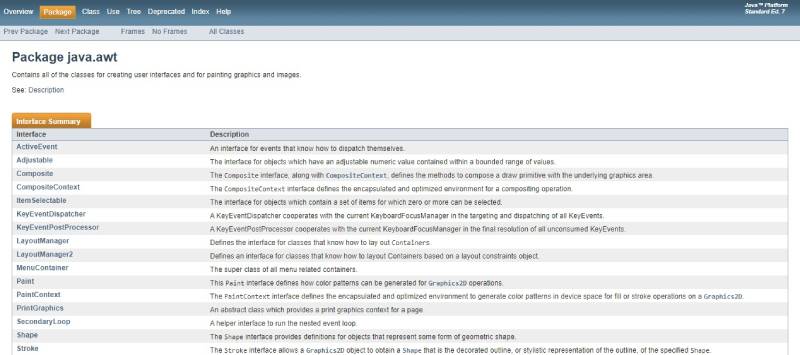
Abstract Window Toolkit is the venerable ancestor of GUI toolkits, setting the cornerstone for Java’s graphical interfaces. Its direct approach gives access to the system’s native GUI components, fostering a simplistic harmony with the underlying platform.
Best Features:
- Native system look and feel
- Simple UI components
- Pioneering event-handling model
What we like about it: The lineage—AWT is the genesis of Java GUIs, offering straightforward, no-frills integration with native system components.
Play
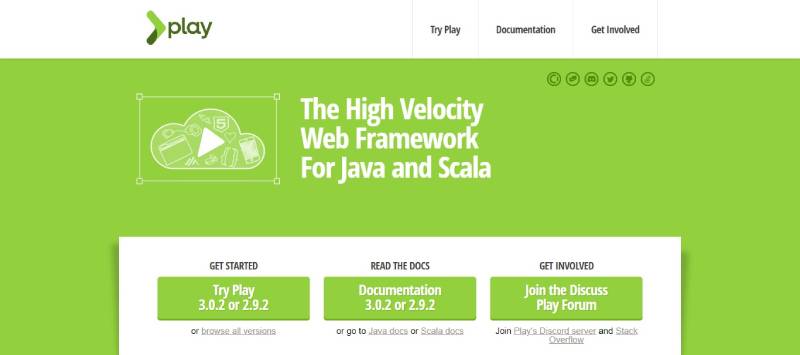
Play is the dynamic virtuoso, striking chords that resonate with those yearning for Scala’s functional elegance or Java’s methodical rhythm. This reactive framework composes web experiences that are as scalable as they are performant.
Best Features:
- Asynchronous processing for high scalability
- Hot code reloading for increased productivity
- Strong support for RESTful services
What we like about it: The swift adaptability—Play syncs to the developer’s tune, delivering swift iterations without missing a beat.
Grails
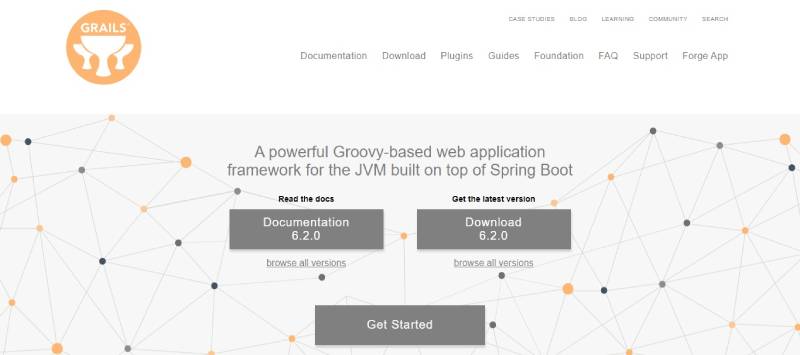
With Grails, step into a realm where convention over configuration reigns supreme, easing the creation of web applications with Groovy-based vivacity. It streamlines development, shepherding projects from conception to production with Groovy’s scripting might.
Best Features:
- Convention-over-configuration paradigm
- Smooth learning curve for Java developers
- Plugins for extendability
What we like about it: The rapidity of development—Grails accelerates projects like a swift gale, with Groovy at its core making coding a breeze.
SWT (Standard Widget Toolkit)
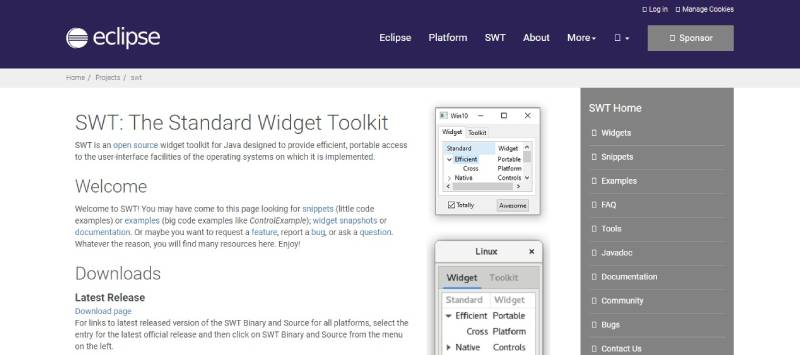
Step into the SWT domain for a rendezvous with efficiency. Here, Java GUI applicability is redefined, melding with the host operating system’s native toolkit to produce crisp, nimble interfaces that snap to attention.
Best Features:
- Integration with native OS GUI toolkit
- Robust widget library
- Part of the Eclipse IDE
What we like about it: The snappiness—SWT’s synergy with native widgets translates to interfaces that respond with brisk precision.
Hibernate
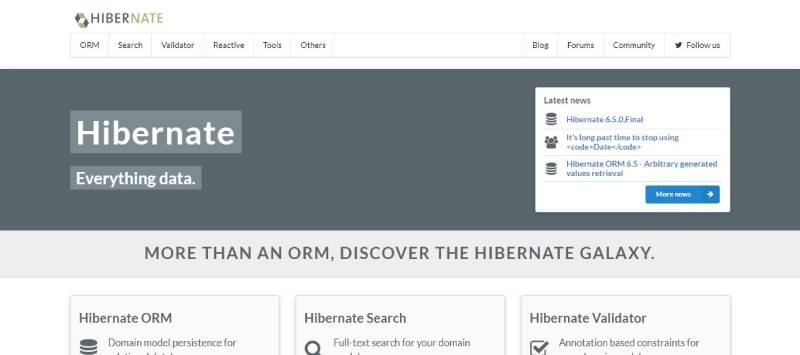
Hibernate is the sage, seamlessly bridging the chasm between object-oriented Java applications and the often rigid relational databases. It offers solace in ORM (Object Relational Mapping), turning data storage and retrieval into a dance of simplicity.
Best Features:
- Rich ORM framework
- Transparent persistence without the need for SQL
- Cacheable queries for performance
What we like about it: The ease of ORM—Hibernate unravels the intricacies of database interactions, encapsulating them in tranquility.
LibGDX
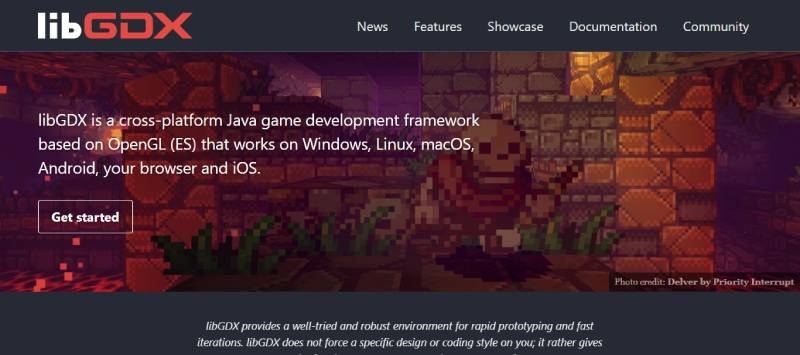
LibGDX is where game development in Java gets serious—a powerhouse framework that tames the screen for immersive 2D and 3D gaming experiences. It melds performance with versatility, allowing creations to transcend the confines of one platform.
Best Features:
- Cross-platform game development
- Extensive API for graphics, audio, and input
- Supports both 2D and 3D game creation
What we like about it: The power of portability—games designed in LibGDX take flight across multiple platforms, unchained, and full of zest.
FAQ On Java GUI Frameworks
What is the best Java GUI framework for beginners?
For those just starting, Swing is the trusty sidekick – comprehensive and well-documented. It comes bundled with the JDK, easing the initial setup process. Plus, its intuitive design patterns lay a solid groundwork for understanding GUI development’s more advanced and nuanced concepts.
How does JavaFX compare to Swing?
JavaFX feels like a fresh coat of paint over Swing’s venerable walls—boasting modern features like CSS styling and FXML for UI design, richer graphics, and a more component-based architecture enabling a steeper dive into responsive Java desktop apps.
Can I develop cross-platform GUIs with Java frameworks?
Absolutely. The beauty lies in Java’s mantra—”Write Once, Run Anywhere.” Swing and JavaFX, among other Java GUI toolkits, offer a harmonious cross-platform development experience, maintaining functionality across various operating systems with minimal headaches.
What are the performance considerations when using Java GUI frameworks?
When performance is paramount, optimal threading, memory management, and timely event handling are mission-critical. Implementing Lazy loading, shrewd use of listeners, and minimizing complexity of UI components can significantly boost Java GUI application responsiveness and speed.
Are there good open-source options for Java GUI frameworks?
Certainly! Beyond Swing and JavaFX, options like Apache Pivot and JGoodies reveal a trove of open-source riches.
These alternatives promise a playground of innovation and collaboration—a testament to the Java community’s commitment to open-source philosophy.
How important is MVC architecture in Java GUI frameworks?
MVC, it’s like the spine in a well-structured body—crucial for dividing responsibilities within the application, effectively separating user interface (UI) logic from the business logic. This separation enhances code maintainability and lays the groundwork for cleaner, more modular application development.
What’s the role of JavaBeans in Java GUI development?
JavaBeans are the unsung heroes, facilitating reusability within component-based architectures.
They enable the creation and manipulation of reusable UI components, which can be visually manipulated in GUI builder tools, streamlining the workflow and sprouting efficiencies in developing complex interfaces.
Can Java GUI frameworks integrate seamlessly with databases?
With JDBC (Java Database Connectivity) API, blending Java GUIs with databases is akin to bridging two worlds.
Whether it’s connecting to a SQLite database for a lightweight desktop app or a robust RDBMS like PostgreSQL for data-rich enterprise solutions, Java GUI frameworks cater to them all with grace.
How has Java GUI development evolved with newer Java versions?
The evolution is continuous—think JavaFX supplanting Swing as the golden child in recent JDK releases, the introduction of lambda expressions smoothing over event-driven programming, and modular development making a leap forward with Project Jigsaw. It’s an ever-morphing landscape, with each Java version injecting vitality.
What are the best practices for Java GUI testing?
Testing a Java GUI is like tiptoeing through a maze—an intricate affair. Tools like JUnit with AssertJ-Swing and TestFX stretch their muscles here.
They enable automated testing that simulates user interactions, enforcing robustness and reliability before a user ever lays a click on the interface.
Conclusion
Navigating through the cosmos of Java GUI frameworks feels akin to mapping the constellations—each point of light, a potential path to elegance. With the ink now drying on our exploration, a semblance of understanding crystallizes.
- Swing and JavaFX have emerged as steadfast companions in the journey, revealing depths from event-driven paradigms to gorgeously rich graphics.
- The quest for cross-platform harmony, it transpires, need not be the labor of Sisyphus; Java’s tools bear the standard of unity, bringing diverse systems under a single banner of code.
- And always, the whisper of best practices echoes in the drafting halls, urging on a dance of performance and aesthetics.
As the final code lines take form, the conclusion is thus: In the hands that wield them with care, these frameworks transform—agents of the exceptional, architects of engagement. Mastery of these tools is not simply technical prowess; it’s the artistry of interaction’s future.
If you liked this article about Java GUI frameworks, you should check out these articles also:
- Securing Funds: How to Get Funding for An App
- Connect and Explore: The Best Apps Like Meetup
- Family First: The Best Apps Like Life360 for Safety
- Understanding JavaScript Array.length for Data Handling - June 26, 2024
- Red Flags to Watch for When Hiring an Affordable Website Design Agency - June 26, 2024
- How Flutter Enhances Video App Creation Across Platforms - June 26, 2024





